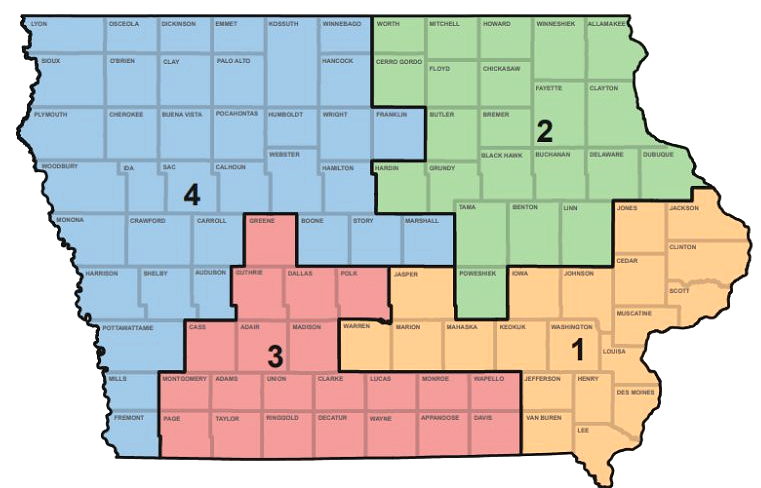By Jim Ellis
March 23, 2022 — Though both are only four-district congressional states, Iowa and Nevada will both host a large number of highly competitive US House races this year, and now the candidates have filed.The Senate races in both states are already well defined and will come to a head in the general election. In Iowa, Sen. Chuck Grassley (R) is on the ballot for an eighth term having been first elected in 1980, and it is clear that he will face former US Rep. Abby Finkenauer (D) in the general election.
In Nevada, first-term Sen. Catherine Cortez Masto (D) defends her seat most likely against former Attorney General Adam Laxalt (R), but he must first deflect a credible Republican primary challenge from businessman and disabled Afghan War veteran Sam Brown.
The Hawkeye State House races feature only one safe member, freshman Randy Feenstra (R-Hull/Sioux City). The other three races will again host tight campaigns as they did in 2020, which of course includes Rep. Mariannette Miller-Meeks’ (R-Ottumwa) six-vote victory.
In the new 1st District, Miller-Meeks will again campaign in a district not much different than the 2nd District that she carried by the slimmest of margins in the last election. She won’t again face former state Sen. Rita Hart (D), however. Despite coming agonizingly close to victory in 2020, Hart declined to seek a re-match this year. Democrats only filed one candidate, so state Rep. Christina Bohannan (D-Iowa City) and incumbent Miller-Meeks will compete in a venue that is likely to yield another close finish.
Rep. Ashley Hinson (R-Marion/Cedar Rapids), who knocked off then-Rep. Finkenauer in what was Iowa’s 1st District, finds herself in a slightly more Republican 2nd District. Like in the new 1st CD, the Democrats filed only one candidate. In this seat, the Democrat nominee will be state Sen. Liz Mathis (D-Hiawatha) a former news anchor at the same television station where Hinson also reported the news. The new 2nd rates as R+6 according to the FiveThirtyEight data organization.
In the Des Moines-anchored 3rd CD, Rep. Cindy Axne (D-Des Moines) has won two plurality victories and looks to face another difficult re-election campaign in a seat that rates R+2. State Sen. Zach Nunn (R-Bondurant) looks to be the strongest Republican of the three GOP contenders and is the favorite to win the nomination. This will become a top national Republican conversion opportunity.
Not previously mentioned as a potential candidate against Nevada Rep. Dina Titus (D-Las Vegas) in a new 1st District that is much more Republican, former 4th District Congressman Cresent Hardy (R) filed at the deadline on Friday to officially enter the race.
Rep. Titus has expressed displeasure at the configuration of her new district that FiveThirtyEight calculates went from a current D+22 rating to a D+4 under the new plan. Dave’s Redistricting App finds the average 1st CD Democratic vote at 52.6 percent and the Republican percentage at 42.3 percent. This is considerably better than the seat where Titus averaged 62.1 percent in the five elections conducted during the previous decade.
As many as four other Republicans may qualify for the primary ballot, but Hardy appears to be the most formidable of the contenders. The new 1st District contest, in a CD that encompasses part of Las Vegas before moving south to include the cities of Henderson and Boulder City, will become competitive in the fall but is still an uphill battle for any Republican nominee.
Frequent candidate Danny Tarkanian (R), who last year was elected to the Douglas County Commission after a long string of electoral defeats, is again running for Congress. This will be his fourth quest for the US House in a third different district, on top of two Senate races. Previously, he lost a pair of campaigns in the 3rd CD and one in the 4th District.




